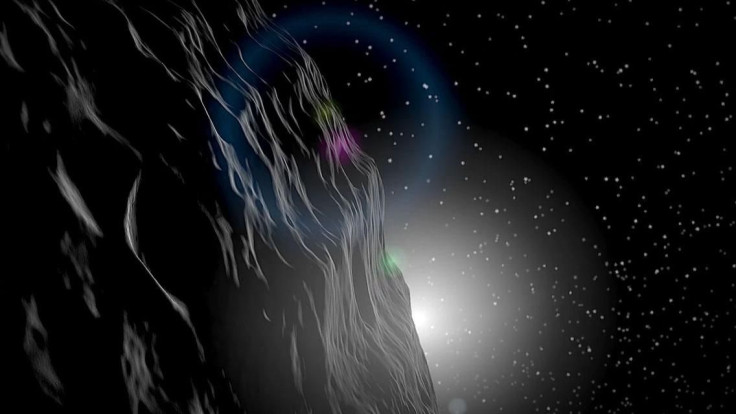Asteroid Impact Drill: Scientists Test Planetary Defense System

Thursday will be judgment day for NASA’s Planetary Defense Coordination Office, as it tracks an asteroid flying close to Earth as a test of how well it could avert disaster if an asteroid poses serious threats to Earth in the future.
The small space rock 2012 TC4 will zoom by at about 26,000 miles away from us — roughly 10 times closer than the moon and just outside the orbits of communications satellites, NASA said Tuesday. During its flyby, scientists around the world will be watching the asteroid to see how well their network can respond to asteroid threats, with individual groups reporting their observations and coordinating with others.
Researchers always try to learn more about individual asteroids and our solar system as a whole. But the Planetary Defense Coordination Office is supposed to find and track asteroids and comets that come close to us and might be dangerous, and has protocols in place for warning and preparing governments about potential crashes. Those skills will be put to the test on Thursday with TC4, which will pass by our planet harmlessly.
“Asteroid trackers are using this flyby to test the worldwide asteroid detection and tracking network, assessing our capability to work together in response to finding a potential real asteroid-impact threat,” NASA scientist Michael Kelley said in the space agency’s statement.
The asteroid is between 45 and 100 feet across, and NASA said TC4 will pass closest to Antarctica at 1:40 a.m. EST.
Experts using ground-based telescopes will view the rock across different wavelengths, including infrared and radar. Although the U.S. space agency’s Center for Near Earth Object Studies, located at the Jet Propulsion Laboratory in California, is funding a lot of those astronomers, there are others working with space agencies and groups from around the globe.

“This campaign is a team effort that involves more than a dozen observatories, universities and labs around the globe so we can collectively learn the strengths and limitations of our near-Earth object observation capabilities,” Vishnu Reddy, the drill leader at the University of Arizona’s Lunar and Planetary Laboratory in Tucson, said in the statement. “This effort will exercise the entire system, to include the initial and follow-up observations, precise orbit determination, and international communications.”
These officials will not be alone.
“Amateur astronomers may contribute more observations, but the asteroid will be very difficult for backyard astronomers to see,” according to NASA. It won’t be very bright and it will be moving quickly.
If an asteroid were to pose a serious threat to the planet and astronomers spot it in time, officials have a few plans for how to deal with it, depending on how close it is to Earth and how much time they have before it strikes down. All of the strategies involve changing the rock’s trajectory.
One method includes using the gravity of a large spacecraft to slowly draw an asteroid away from Earth. Another involves crashing into an asteroid to change its course with a spacecraft that would be called a “kinetic impactor.” The final plan, a last-ditch effort, sounds like something out of the “Armageddon” movie: detonating a device that would blow away the asteroid’s surface material in a way that would send the rock in another direction.
“This is a last-resort measure,” Lindley Johnson, the head of the Planetary Defense Coordination Office, has said. “Though quite effective if time is short, it would take a lot of coordination and approval not only within the U.S. government, but also with the international community.”
There may not be a need for that anyway in this lifetime.
Although asteroids frequently come close to Earth, NASA said there is “no asteroid currently known is predicted to impact Earth for the next 100 years.”
© Copyright IBTimes 2024. All rights reserved.





















